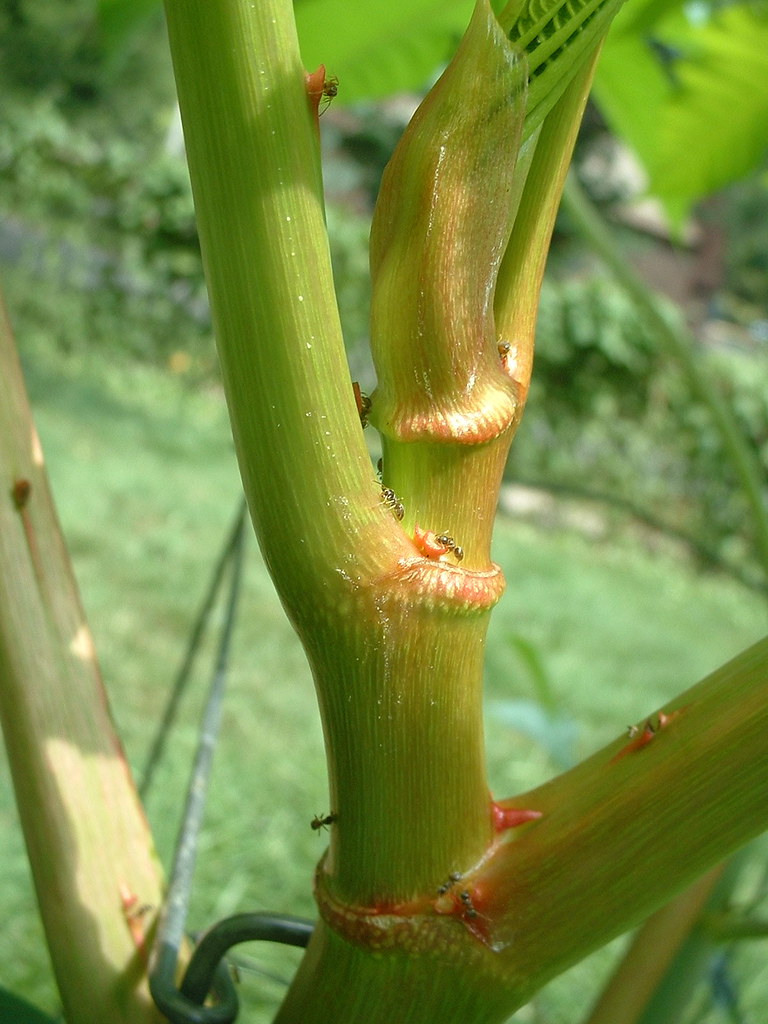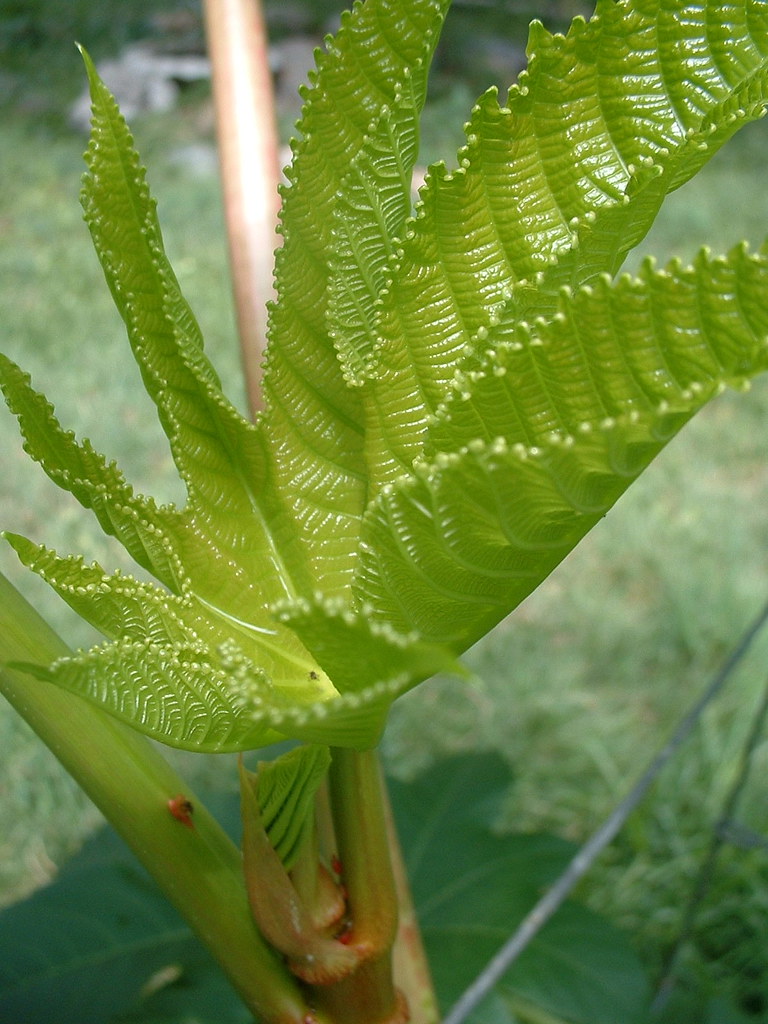 Tonight let's get up close to the Castor (Ricinus communis 'Zanzibariensis') we have planted in the back yard. Fernymoss was after some detail shots of the trunk and leaves, and as you can see, he really hit pay dirt! In fact, he made a rather astounding discovery we've never seen before when growing these ... there are ants feeding on it! (If you look at the enlarged version of the first shot, you'll see them busily working some sort of nectaries scattered along the trunk and the leaf nodes.) This was definitely something to set us to thinking .... do they have some sort of symbiotic relationship with them, much as peonies do? Apparently they must, and after researching it a bit on the Google, I wasn't able to come up with anything definitive, except that an extract from the leaves is being used in Brazil to kill leaf cutter ants ... which certainly didn't point to a beneficial inter-species relationship.
Tonight let's get up close to the Castor (Ricinus communis 'Zanzibariensis') we have planted in the back yard. Fernymoss was after some detail shots of the trunk and leaves, and as you can see, he really hit pay dirt! In fact, he made a rather astounding discovery we've never seen before when growing these ... there are ants feeding on it! (If you look at the enlarged version of the first shot, you'll see them busily working some sort of nectaries scattered along the trunk and the leaf nodes.) This was definitely something to set us to thinking .... do they have some sort of symbiotic relationship with them, much as peonies do? Apparently they must, and after researching it a bit on the Google, I wasn't able to come up with anything definitive, except that an extract from the leaves is being used in Brazil to kill leaf cutter ants ... which certainly didn't point to a beneficial inter-species relationship.The most useful tidbit I was able to turn up was in a comment on Davesgarden.com where one grower had this to say: I have observed that they also have nectaries on their petioles which attract ants, and these will guard the plant like a fortress. The only bugs to bother mine have been earwigs chewing at night when the ants are off-duty.

We're definitely going to have to do some more observing on our own to see if this "guarding" behavior truly is what they're up to, but so far, I don't think the ants are suffering any ill effects from their feeding on these nectaries. Our suspicion is that they do provide a useful service to the plant, perhaps freeing the new leaves from their membrane as they unfold, but I have no solid evidence to prove this as yet. (So ... here you go Nancy, we've got a garden mystery to solve!) If anyone has any solid sources about this behavior, I'd love to hear more about it in the comments.
As I mentioned in my previous post, the toxicity of Castors is well documented, but as long as you're prudent and don't allow pets, children or other animals to munch on it, they're really pretty safe to grow and make a stunning architectural accent in the garden. They're also reputed to repel moles, voles and other pesky critters and though we can't personally attest to this since we've never had moles and only the occasional vole, maybe the fact we plant a few each year has kept them at bay. In any case, we love the exotic tropical look they bring to the yard, and it's fun to speculate just how large they will get during the summer ... our best (several years ago) was probably about 12 feet, but it all depends on the caprices of Nature ... the longer you can hold off the hard freeze, the longer they'll be around. Removing really big specimens can be a challenge if you choose to take them out (so to speak) in the fall, when the best solution is usually a saw. We usually just let them die in place, remain over the winter, and then in the spring they're relatively easy to just pull out of the ground. The result is a long trunk terminating in a scary tap root that looks ever so much like a spear!
I alluded to a story about a neighbor and Castors in the previous post, and I think I'll save it for another post sometime soon. Suffice to say for now, she was a bit freaked out and intimidated by our over-enthusiastic planting one year. Sorry, FAR, but you'll have to wait a bit longer for that one!
The first shot shows off the trunk, those nectaries and the ants hard at work ... and if you look to the upper right you can see another Cthulu starting to emerge ....
The second shot shows the unfurling of a new leaf, and if you look really closely, you'll see that some water from the previous night's rain had collected in it and drowned some unfortunate bug who obviously didn't know how to swim.
Photos taken 5, August 2007, courtesy of Fernymoss.









171 comments:
Post a Comment